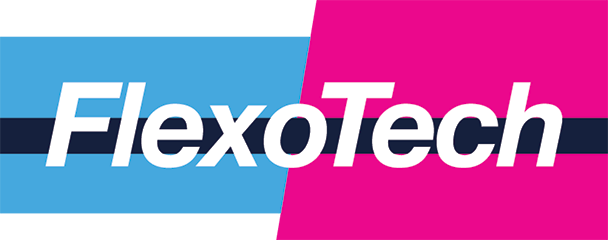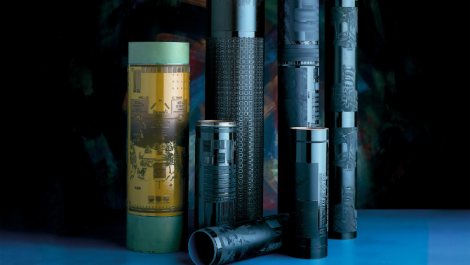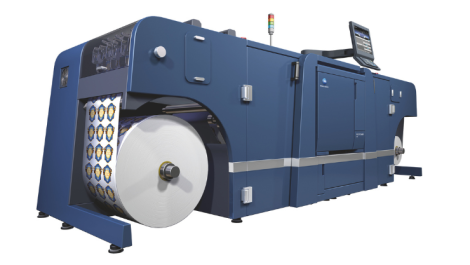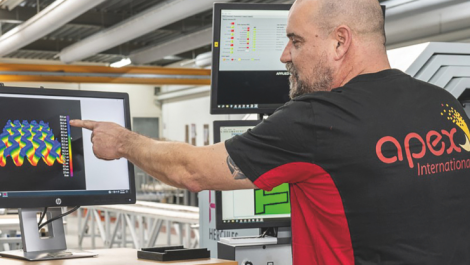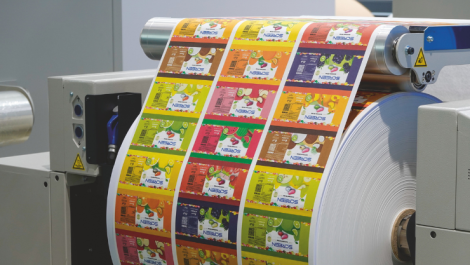With 30 years’ experience, Laserclean b.v have built an impressive portfolio of pioneering laser cleaners. Here they share their expertise and insight into why laser cleaning is the best method for today’s anilox rollers.
Anilox rollers have evolved over the years from chrome rollers with large cells to ceramic anilox rollers with much smaller cells. As a result, traditional cleaning methods have begun to reach the limits of their capacity.
Laser cleaning of anilox rollers has become an excellent alternative.
Situation: surface tension problem
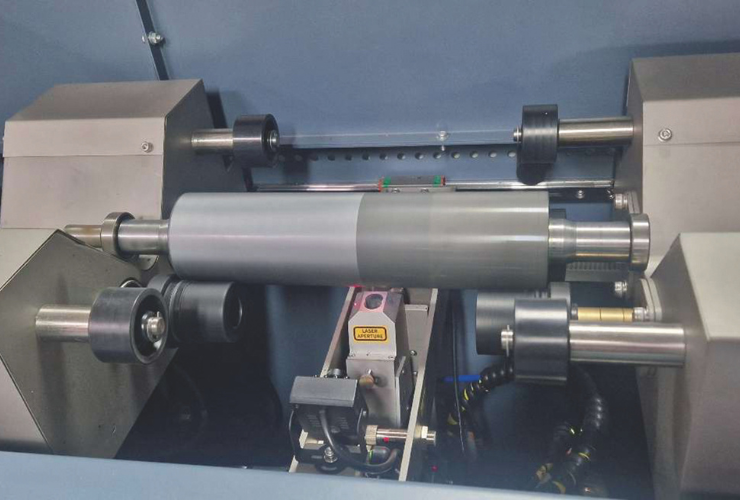
Narrow web anilox roller 50% cleaned with laser
The dirt on an anilox roller is a combination of pigment and polymer residues. Whilst pigments are easy to remove using traditional cleaning methods, polymers are much more of a challenge. This is due to the thin transparent glossy layer which they form on the ceramic surface of the roller.
This layer results in the surface tension of the anilox roller being the same as the surface tension level of the polymer, and therefore almost the same as that of the polymer plate too. So, the surface tension of the anilox roller is almost the same as the surface tension of the polymer plate. To enable the most successful possible transfer of liquids from one surface to another, there needs to be a difference in surface tensions.
Ultimately, if only pigments are removed during cleaning, but polymers remain, the anilox roller will not perform like it should.
Solution: surface tension restored
The polymers on the anilox rollers need to be removed, and this is only possible by burning them away. Lasers are the most effective way of achieving this, as they are designed exactly for this purpose. Once the polymers are removed, the surface tension on the roller is restored. The difference in tension between the anilox roller and polymer plates now enables the optimal ink transfer to the polymer plate.
If the anilox rollers are not effectively cleaned and not enough ink is transferred, it is possible to increase the pigments to adjust the colour density. However, this can lead to a disturbance in the ink formula which can negatively impact the quality of the finished packaging e.g. surfaces are more prone to scratching.
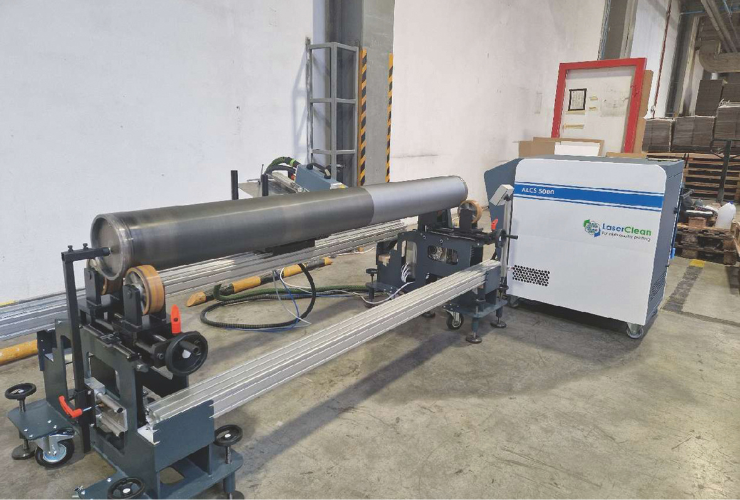
Mobile laser system used by service providers
With a clean anilox roller, enough ink is transferred, and there is no need for adding costly pigments. Tests have shown that a saving of 3-5% on ink costs is possible per year if anilox rollers are kept clean.
Sustainable method
The benefits do not end there; alongside the advantage of improved ink transfer, laser cleaning is also the most sustainable cleaning method. No water, chemicals, or compressed air are needed, so there is no extra wastage caused during the process. The laser unit itself uses minimal energy, running on less than 1000W.
Cleaning efficiency
The cleaning speed is on average 4cm per minute so a sleeve/ roller of 120cm length is cleaned in 30 minutes. As the system is fully automated, there is no need of human intervention during the cleaning process. After cleaning, the sleeve/ roller can be put directly in the press or in storage.
How does it work?
Lasers produce light that is made up of photons, which are the smallest particles, meaning that they can enter the small cells of the anilox roller. This method uses fibre laser, which has a lifetime of 30,000 hours; 20,000 short pulses per second are projected on the surface of the anilox roller. The laser pulses carry energy which is absorbed by the dirt. The dirt heats up and eventually vaporizes. The pulses emitted by the laser are designed to be strong enough to vaporize the dirt without affecting the ceramic surface beneath.
The waste created is limited to only a few grams of incinerated material which can be disposed of without the need for any extra procedure.
Investment
Choosing a laser cleaning system is an investment for a lifetime. It will guarantee improved end results by eliminating the main issue causing poor print quality: dirty anilox rollers. With limited yearly costs, laser systems provide the cheapest method of anilox cleaning. Running on low electricity consumption, daily use generates less than €1500 costs on filters.
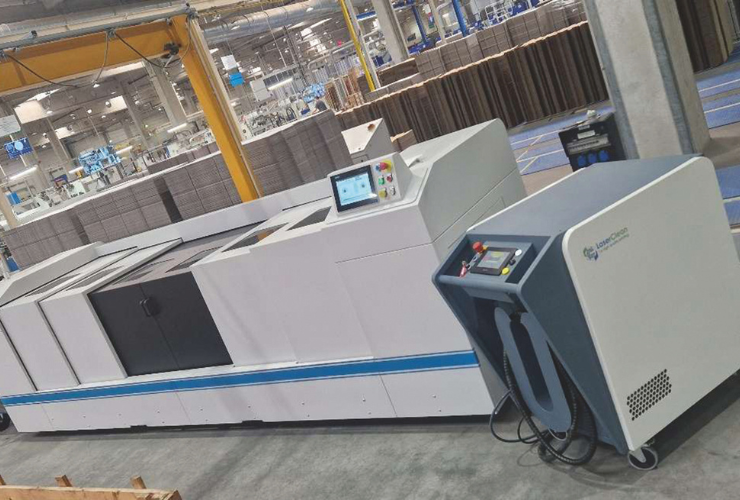
Off-line laser cleaning system for large roller used at corrugated printing
Speed is paramount for efficiency and using the laser system for both narrow and mid-web produces impressive results.
On narrow-web a roller is cleaned in about five minutes; 10 rollers per hour (with handling), equalling 300.000 anilox rollers per annum. On mid-web a sleeve is cleaned in 25 minutes; two sleeves per hour producing 60.000 clean anilox sleeves per annum.
Laser cleaning systems range in cost from €50.000 to €70.000 for narrow-web and mid-web solutions.
Laserclean b.v.
Laserclean b.v. has 30 years’ experience with surface cleaning with laser. We have an extensive portfolio of laser systems starting from narrow-web to wide-web. Covering countries across the globe, our service and sales agents offer cleaning solutions to multiple flexo printing companies. Our state-of-the art systems are maintenance free, however we have access to all our systems via Wi-Fi in case of any issues. Our worldwide directory of satisfied end users continues to grow every year.
